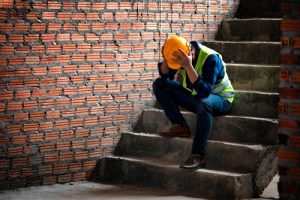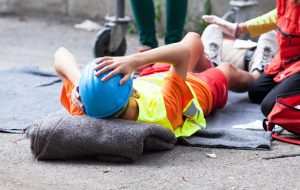First, let’s detail what a cardiac arrest is, whether it be an in-hospital occurrence—INCA or out-of-hospital—OHCA. A cardiac arrest is when the heart all of a sudden stops working and pumping blood around your body comes to a standstill. The difference between a heart attack and cardiac arrest is that the person is awake, breathing, and responsive with a heart attack. Unfortunately, a heart attack can become a cardiac arrest. This occurs when the person loses consciousness, becomes unresponsive, and breathing becomes erratic or stops.
The cause of cardiac arrest could be a form of cardiomyopathy or arrhythmias, like ventricular fibrillation or ventricular tachycardia. Whatever the reason, a cardiac arrest is a medical emergency requiring urgent treatment.
If you are present when a cardiac arrest occurs, early intervention in the Chain of Survival equates to more chance the cardiac arrest victim can survive. First Aid training is of considerable importance. First aiders are often the first intervention in the Chain of Survival of the cardiac arrest sufferer.
Some Statistics On Cardiac Arrest UK
Many people think that a cardiac arrest or similar threat to life happens to other people, not them. But unfortunately, UK statistics show it can happen to anybody. A study of Out of Hospital Cardiac arrests was conducted that demonstrated the benefit of using CPR. From 2010 – 2019, there was an increase from 8% to 13.33% in the survival rate of an OHCA up to one year after. In 2021 the overall figure across all age groups in the study was 20,061, with most occurring in the 85+ age group.
However, other UK statistics indicate as many as 100,000 admission to hospitals are due to heart attacks, that is
- 260 admissions a day
- One heart attack occurs every 5 minute
In the 1960s, 7 out of 10 UK cardiac arrests were fatal. Today’s figures indicate an improvement, with 7 out of 10 people surviving their cardiac arrest. This is thought to be due to
- Increased awareness of the symptoms
- People more aware of the need for healthy living
- Early recognition of heart problems
- More training in First Aid is available. Including recognizing the signs of cardiac arrest and the knowledge, skill, and confidence to perform CPR or use a defibrillator.
Should There Be A Trained First Aider In Your Workplace?
The simple answer would be yes, for several reasons. First, where cardiac arrest victims are concerned, it would be a definite yes. Anyone at any age can suffer from cardiac arrest. The cause could be genetics, lifestyle, or other ill-health problems. Why someone has a cardiac arrest is not your problem. Being able to respond to the situation promptly is vital to maintaining the Chain of Survival.
A trained first-aider can recognize the signs of cardiac arrest quickly. They can then apply the appropriate response promptly,
- Applying CPR
- Calling for medical assistance
- Using a defibrillator (AEM) if available.
Workplaces are increasing First Aid Training in the workplace, be that an office or a construction site. For those interested in training people to save lives in your work environment, contact CPN Training for a chat.












